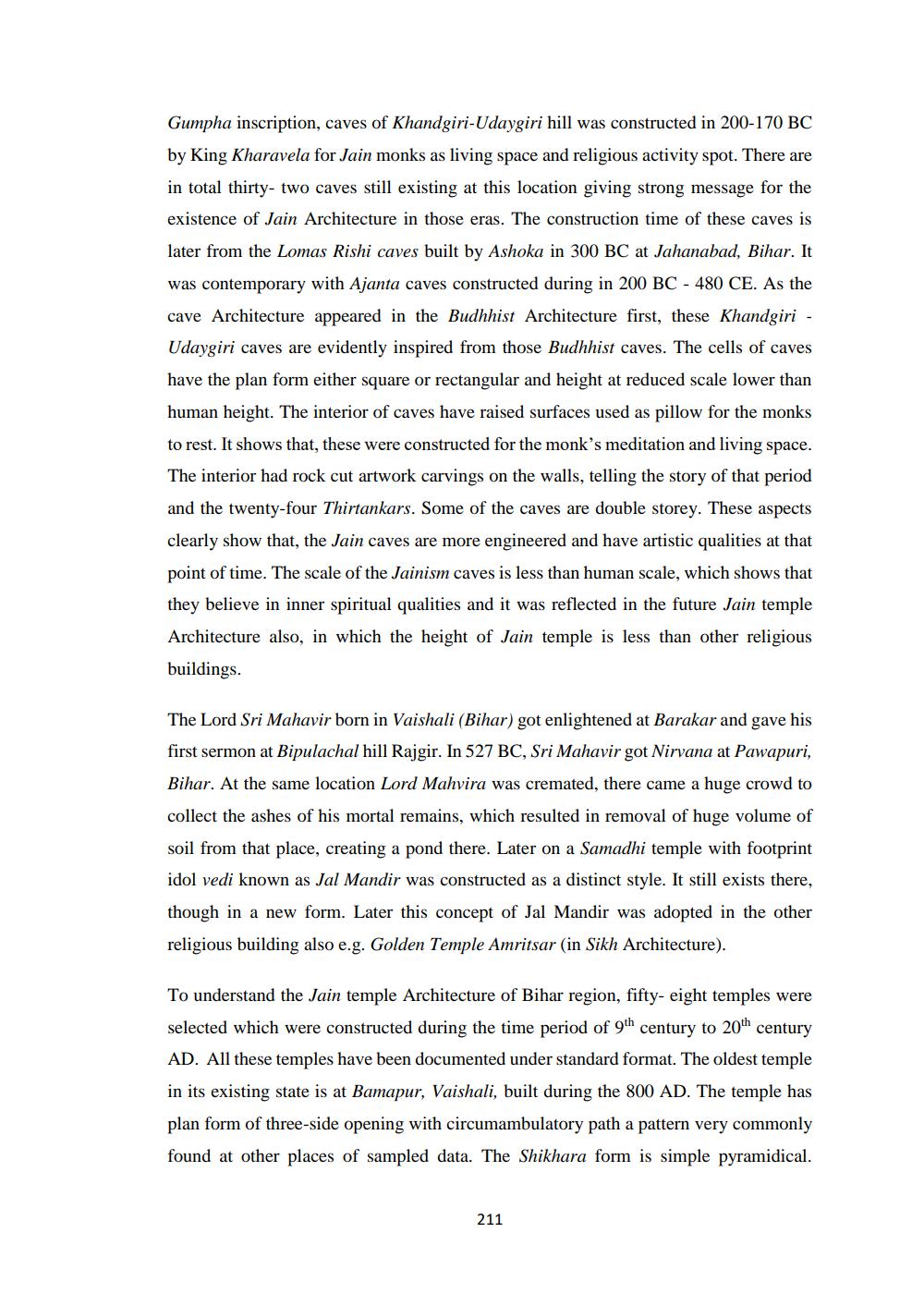________________
Gumpha inscription, caves of Khandgiri-Udaygiri hill was constructed in 200-170 BC by King Kharavela for Jain monks as living space and religious activity spot. There are in total thirty-two caves still existing at this location giving strong message for the existence of Jain Architecture in those eras. The construction time of these caves is later from the Lomas Rishi caves built by Ashoka in 300 BC at Jahanabad, Bihar. It was contemporary with Ajanta caves constructed during in 200 BC - 480 CE. As the cave Architecture appeared in the Budhhist Architecture first, these Khandgiri - Udaygiri caves are evidently inspired from those Budhhist caves. The cells of caves have the plan form either square or rectangular and height at reduced scale lower than human height. The interior of caves have raised surfaces used as pillow for the monks to rest. It shows that, these were constructed for the monk's meditation and living space. The interior had rock cut artwork carvings on the walls, telling the story of that period and the twenty-four Thirtankars. Some of the caves are double storey. These aspects clearly show that, the Jain caves are more engineered and have artistic qualities at that point of time. The scale of the Jainism caves is less than human scale, which shows that they believe in inner spiritual qualities and it was reflected in the future Jain temple Architecture also, in which the height of Jain temple is less than other religious buildings.
The Lord Sri Mahavir born in Vaishali (Bihar) got enlightened at Barakar and gave his first sermon at Bipulachal hill Rajgir. In 527 BC, Sri Mahavir got Nirvana at Pawapuri, Bihar. At the same location Lord Mahvira was cremated, there came a huge crowd to collect the ashes of his mortal remains, which resulted in removal of huge volume of soil from that place, creating a pond there. Later on a Samadhi temple with footprint idol vedi known as Jal Mandir was constructed as a distinct style. It still exists there, though in a new form. Later this concept of Jal Mandir was adopted in the other religious building also e.g. Golden Temple Amritsar (in Sikh Architecture).
To understand the Jain temple Architecture of Bihar region, fifty- eight temples were selected which were constructed during the time period of 9th century to 20th century AD. All these temples have been documented under standard format. The oldest temple in its existing state is at Bamapur, Vaishali, built during the 800 AD. The temple has plan form of three-side opening with circumambulatory path a pattern very commonly found at other places of sampled data. The Shikhara form is simple pyramidical.
211




